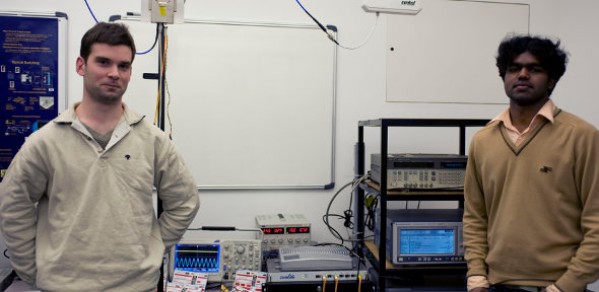
Airport terminals will increasingly require systems with high levels of computational power to provide the necessary intelligent automation; to provide high quality services to passengers; stringent levels of safety and security that are as unobtrusive as possible; efficient processing of commercial goods and luggage; high quality information systems; airport transportation systems and appropriate support for in-house commercial ventures.
The Intelligent Airport (TINA) project seeks to develop a next generation advanced wired and wireless network to meet the potential requirements for future “intelligent networks” within an airport environment. To address this major topic, a wide range of skills are required including those in computer architectures, protocols, fixed and wireless links and sensing units, in particular Radio Frequency Identification (RFID). The project involves four research groups: University College London, the University of Cambridge (in both Electrical Engineering and the Computer Laboratory) and the University of Leeds, who are working together to address different aspects of the network, collaborating with partner companies including Arup, BAA, Boeing, Laing O’Rourke, Motorola, Red-M, Tyco and Zinwave. Since the instigation of the project, other companies have expressed interest in becoming involved. The research groups have forged new links with Professor Henry Chan of Hong Kong Polytechnic University who has developed a sister project, involving Cisco and the Hong Kong International Airport Authority.
A Showcase Event in October 2008 provided an overview of the advances to date within the project, allowing participants to view first phase demonstrations by the Universities. There were also presentations from speakers representing Ofcom, the Hong Kong Airport Project and the Department's Institute for Manufacturing's RFID team.
The following Projects were demonstrated:
Passenger and Data Flow Modelling by University of Leeds:
A computer based design tool was demonstrated. The demonstration simulated passenger flow through a realistic departure lounge in the busy morning period. Passenger visit retail outlets and business lounges before departing on their flights. The simulation also predicts the time/space varying mobile bandwidth requirements for both current and future scenarios.
MOOSE – Highly Scalable Ethernet Infrastructure by University of Cambridge, Computer Laboratory:
As the number of networked devices used by passengers and airport staff increases, current Ethernet switch technology becomes unable to manage the number of MAC addresses involved. The MOOSE switch architecture has been developed to overcome this limitation by dynamically rewriting addresses. The demonstration showed this technology in use for live internet traffic.
Active Tag Location by University College London:
The ability to locate passengers within a terminal will provide the airport and airlines with valuable operational information. This demonstration showed how an active tag can be used to locate passengers with approximately 1m resolution.
Passive Tag Location and Data Overlay by University of Cambridge, Department of Engineering:
If it were possible to extend the read range of passive RFID tags to 10m, it would enable zonal location information, which is sufficient for many applications in the airport. This demonstration showed how the use of a Radio over Fibre Distributed Antenna System (RoF DAS) can improve the coverage of passive RFID and also how the service can be overlaid on a WiFi distribution network.
The project has also generated a prize winner; George Gordon, an engineering graduate from Auckland University has won a Rutherford scholarship to do his PhD working on the Intelligent airport project here in Cambridge. George has been studying ways to connect information from independent electronic sources in an "intelligent airport" using fibre optic and radio frequency technologies. The doctoral scholarship at Cambridge marks the 100th anniversary of Ernest Rutherford receiving the Nobel Prize. The Rutherford Foundation said the Auckland University student had shown exceptional academic ability.

